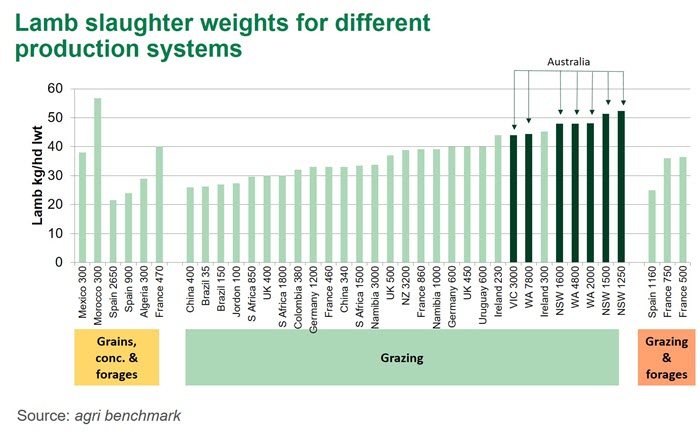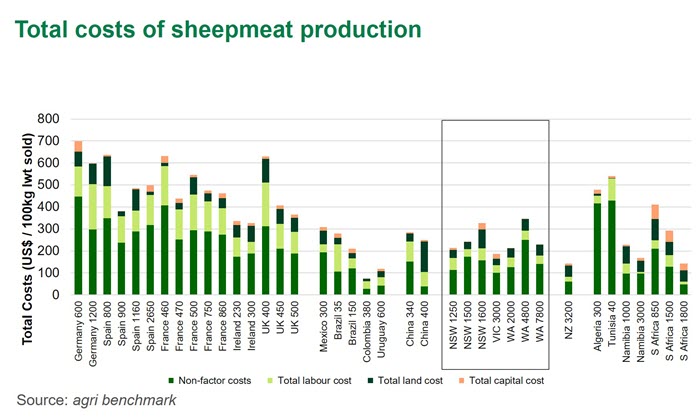Australian sheep producers perform in profit and productivity
The 2017 Global agri benchmark network results provide an insight into how Australian sheepmeat producers are performing globally and against our largest competitors.
Key points
- Globally, most sheep enterprises made only short or medium-term profits, while the majority of Australian farms made a long-term profit in 2016.
- Australian sheepmeat production per ewe remains high for prime lamb focused enterprises, boosted by higher growth rates compared to other grazing based systems.
- Weaning rates represent an opportunity for Australian producers, with most farms underperforming the New Zealand and European systems.
- Producers in Australia and New Zealand benefit from some of the highest labour unit productivity in the world.
Profitability of the sheep enterprise
In terms of sheep flock profitability (excluding other income streams), Australian farms showed mixed results. All farms covered cash costs and depreciation in the short and medium-term, however only four out of seven Australian farms were profitable in the long-term, when opportunity costs were taken into account. The typical* New Zealand farm was able to cover all three cost levels, hence achieving long-term profitability.
In terms of whole-farm profit, Australian sheep farms were the most profitable worldwide. This was due primarily to scale and diversified income streams, such as cropping, wool and beef.
Australia’s efficiency edge
A closer examination of the results show some strong comparative efficiency advantages for Australian producers. When compared to other grazing-based systems, Australian farms produced above average amounts of sheepmeat per ewe annually and, in some instances, among the highest globally. Most Australian farms that had a focus on lamb production easily outperformed the New Zealand system in this regard, while farms with a predominantly Merino flock or those in lower rainfall zones achieved lower levels of production per ewe.
Among production systems included in the study, Australian farms produce the heaviest lambs, particularly when compared to other grazing systems. Australian lambs slaughtered at weaning achieving the highest growth rates globally.

Weaning rates represent an opportunity to boost productivity for some Australian farms. Two Australian systems with a focus on lamb production had comparatively higher weaning rates, with the Victorian system weaning close to 140 lambs per 100 ewes annually – this farm also had the highest sheepmeat production per ewe among all Australian farms, despite having the lowest lamb carcase weights. Five Australian operations all weaned less than 100 lambs per 100 ewes, while the New Zealand system weaned roughly 111 lambs per 100 ewes annually.
Keeping costs in check
Australian farms maintain low costs of sheepmeat production when compared to the rest of the world, while costs in New Zealand are lower in many areas. Australia’s average wage for employed staff were around US$25/hour – among the highest in the world. However, Australia and New Zealand achieve some of the highest labour productivity in the world, which significantly reduces the contribution of labour costs to total costs of producing sheepmeat. In dollar figures, Australia and New Zealand systems had labour costs of US$43 and US$22/100kg, respectively.
When considering the long-run costs of meat production (all allocated whole-farm costs, as well as opportunity costs for family labour, land and capital), Australian farms perform well globally. Other costs, in particular feeding costs such as pasture improvement and animal purchases, were relatively high in Australia (when compared to New Zealand). This resulted in all Australian systems having higher total costs of production than the New Zealand system.

*Instead of analysing industry averages, the approach taken by agri benchmark is to select enterprises that are indicative of the spectrum of production systems within a country.



